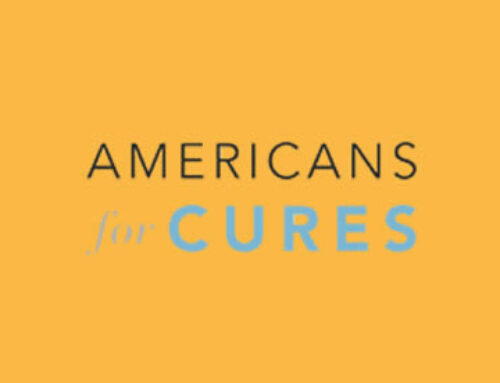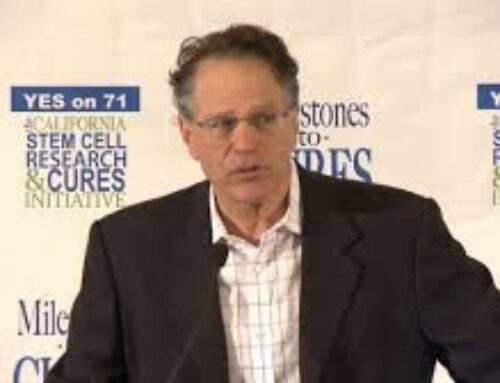Jake Javier doesn’t remember much following the days of his accident.
The Bay Area native barely remembers nearly drowning in his friend’s swimming pool in June 2016. He doesn’t recollect being airlifted to a Walnut Creek hospital, where doctors discovered that the 18-year-old had broken his neck and severely damaged his upper spinal cord.
What Javier does remember is the shock that went through his body when he dove and hit the bottom of the pool that day before his high school graduation — he knew he was completely paralyzed from the neck down.
After Javier had been in the hospital for about a week, his parents got a phone call from a doctor at Stanford Medicine. Dr. Gary Steinburg told Javier’s parents about a brand-new stem cell trial that needed candidates like him.
“This was thrown at us and we were like wow, this is something completely different than I would have thought,” Javier said. “I just used to think of stem cells as a science fiction thing of the future, like nothing that would actually directly benefit me.”
On July 7, following X-rays, scans and surgeries, Javier received a transplant of 10 million AST-OPC1 cells made from human embryonic stem cells donated to science. Those AST-OPC1 cells are oligodendrocyte progenitors — a type of cell found in the central nervous system of the spinal column.
The goal: To help Javier regain more body functionality than normal therapy would give him.
“In the past, there was nothing — there was physical therapy and hope,” said Kevin McCormack, senior director of public communications and patient advocate outreach for the California Institute for Regenerative Medicine. The state-funded institute completely funded Javier’s stem cell transplant — and dozens of others.
Javier, now 22, said the stem cell therapy likely boosted his recovery progress, and helped him regain function in his arms and hands.
“My goal the whole time was, the next year, to go back to school,” Javier said.
In 2017, Javier began attending Cal Poly in San Luis Obispo, aiming to graduate with a degree in mechanical engineering in spring 2021.
Javier soon changed his major, however, to follow a different path.
“After my injury, and specifically after I got enrolled in the stem cell trial, I started learning so much about science and medicine,” Javier said. “I looked into how I could get into something related to stem cell research and found it’d be biomedical engineering.”
FROM STEM CELL TRANSPLANT PATIENT TO PROPOSITION 14 ADVOCATE
Now Javier is doing something more than studying. He’s advocating for the continued funding of stem cell research.
Javier is calling on voters to pass Proposition 14, which will allocate $5.5 billion to the California Institute of Regenerative Medicine (CIRM), in November.
“We’ll still have enough money to fund all the work we’ve already committed to,” McCormack said. “But in terms of funding new projects, we probably won’t have anything left for that.”
CIRM was created in 2004 after 59% of California voters approved Proposition 71, the Research and Cures Initiative, which allocated $3 billion to fund stem cell research in the state. At the time, the proposition was needed to fill the void left when most federal spending on stem cell research was banned in the early 2000s.
Because stem cells come from destroyed human embryos — which are typically produced for in-vitro fertilization — pro-life advocates have likened any research of them to abortion. In 2001, then-President George W. Bush introduced a ban on federal funding for research on newly created human embryonic stem cells.
That ban was later reversed by former President Barack Obama, who signed an executive order in 2009 that allowed the National Institutes of Health to fund previously-restricted stem cell experiments.
HOW MUCH WILL PROP 14 COST TAXPAYERS?
CIRM gets its funding from state-sold bonds. Proposition 14 would allow the state to sell $5.5 billion in general obligation bonds over the next 11 years, or up to $540 million a year, to fund CIRM.
CIRM then would take that money and turn it into grants, staff salaries and payments for patients’ stem cell treatments.
The total estimated fiscal impact of the proposition is $7.8 billion as interest on the bonds is expected to cost about $2.3 billion, according to the state’s legislative analyst.
The average cost per person is estimated at just $5 a year, according to Californians for Stem Cell Research, Treatments and Cures, and the state would have to repay bonds at $260 million per year over the next roughly 30 years.
Opponents of the bill say the state simply cannot afford the $5.5 billion in bonds, especially after the COVID-19 pandemic has caused the state’s budget to confront a $54.3 billion deficit.
Proposition 14 would amount to less than 1% of the state’s current general fund budget, which has about $139 billion available to spend, according to Gov. Gavin Newsom’s 2020-21 budget summary.
Javier is not the only person impacted by CIRM’s grants. The institute has funded stem cell trials for patients with vision loss, immune disorders and paralysis.
Though stem cell research is still in its early years, Javier said it’s important and it can change someone’s life.
“Put yourself in the situation of someone who has a loved one or you yourself might need these stem cells,” Javier said. “Being able to save a life like that, I think it’s so worth it.”









